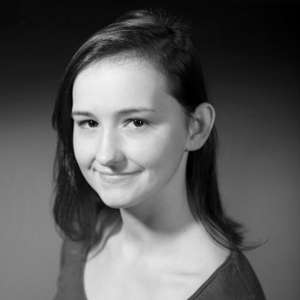Rambert's new triple bill presents two new works alongside an older one. And it struck me how much stuff is involved in the new works, not all of which is completely necessary.
The focus of the night was the premiere of Dark Arteries, choreographed by Artistic director Mark Baldwin to mark 30 years since the Miners' Strike. Dark Arteries is a big, ambitious work that looks impressive and sounds wonderful, thanks to the on-stage presence of Tredegar Town Band. The deep, rumbling tones of the brass set out a musical landscape of the Welsh villages and mines so effectively that the movement had to push not to be overwhelmed by it, Perhaps at times, it worked a little too hard.
The work had some remarkably traditional references. Large Graham-esque set pieces with women in full skirts evoked the “dark artery” of the Welsh coal, the silky costumes billowing like clouds of coal dust. The large cast of the work as well as the atmospheric set design – all darkness and dry ice – gave the piece rather film-like qualities reminiscent of an MGM musical. While I enjoyed the spectacle, with twenty dancers on stage as well as a full brass band, it was often hard to know where to look. The movement, full of gestures and quick repetitions sometimes got lost in the mêlée.
Towards the end some beautiful duets gave a glimpse of a more human side to the work, with the fluid yet contained movement demonstrating the power of quiet moments in such a work. With space to breathe, I felt much more engaged. However the overall feeling was one of confusion.
I enjoyed Frames by choreographer Alexander Whitley, a more circumspect work examining the transience of movement and the seemingly futile effort we put in to preserve it. The dancers create structures with steel poles that frame, restrict, extend their movements. There is an air of earnest hard work that takes time to settle into but pays off in the long run. The steel frames are assembled, dismantled and added to, evolving and creating new contexts that alter the perception of the dance, so that points I had reservations about in the opening few minutes were completely relevant when looked back on later on. I was impressed with this cerebral approach to structure, particularly as it still allowed room for quieter, more emotionally vulnerable moments later on. After all, stripping away the layers of clever structure and arguably gimmicky props, the essence of the work lies in the fact that once finished, a dance ceases to exist. While this is certainly not a new observation, Whitley gives it a fresh and intelligent perspective that shows a lot of promise.
Lucinda Childs' work Four Elements was performed second, providing a bit of respite from the complexity and ambition of the new works. In its simplicity however it was a little underwhelming.
Eight unitard-clad dancers executed repetitive balletic phrases set to weaving floor patterns. While the work put the dancers technique to the test, it felt slightly monotonous at times. The third section did stand out as dancers scooted and hopped from one side of the wings to the other, as if the dance was mainly going on backstage and we were just catching a glimpse of what was going on. I did enjoy the work's hypnotic nature, and was engaged by the slightly macabre paintings by Jennifer Bartlett that formed the backdrop. Still, I was left wondering if it's time Rambert left the unitards at home.


